



























Airlines, Airports and Airliners News 25 to 31 October 2021
Google Banner Ad
FLYSAFAIR CALLS FOR CHANGES TO SA'S PUBLIC HOLIDAY ACT

Low-cost carrier FlySafair has drafted a proposal that seeks to amend the execution of public holidays in South Africa. The airline believes the change will bring about a speedier recovery for the travel and tourism industry and contribute to the country's economic growth.
The proposal has been tabled with the Tourism Business Council of South Africa (TBCSA) for review. If well-received by the body, FlySafair hopes this will begin the process of lobbying the Department of Tourism to introduce the amendment to parliament.
"Our intention is in no way to diminish the importance of these historical days," says Elmar Conradie, CEO of FlySafair. "Our aim would be to look at how the time off from work can be better used to benefit the tourism industry and encourage South Africans to travel again."
According to the Bureau of Economic Research, nearly one million jobs have been lost in the tourism sector and its value chain since 2018. Last year's sharp declines in international visitors and domestic trips have had a knock-on effect in terms of revenue and jobs.
"These are unprecedented times and therefore require some new ways of thinking," says Conradie. "We believe our proposal presents government with a novel idea to stimulate economic growth and recovery for the country as a whole."
The airline says that this year's Easter season and the recent Heritage Day weekend are great examples of how a long weekend can rekindle people's love of travel. According to the eThekwini municipality, 95% of accommodation establishments were fully booked on the Friday and Saturday nights during the three-day weekend in September. This translated into direct spend of R107m - a welcome sign that if given the chance, South Africans will travel.
FlySafair has found that there is a significant increase in bookings when a public holiday falls on either a Monday or Friday. There is a more than 20% increase in average passengers flown over a three-day weekend in comparison to lone public holidays (those that fall mid-week).
"2020 was the year that travel lost and we're doing everything we can to recover," says Conradie. "But with this small change in public holiday execution, there's a chance we could encourage South Africans to travel in their own backyards again."
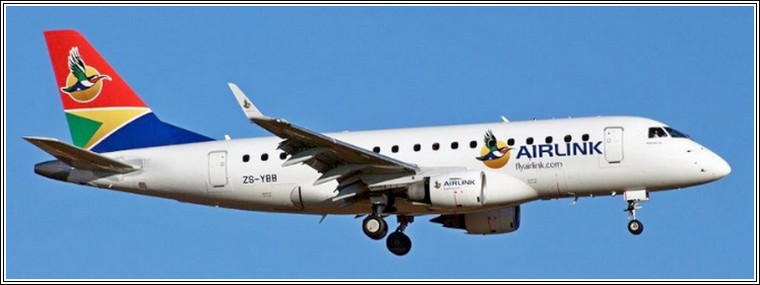
Meals and drinks will once again be served on Airlink's domestic flights following the withdrawal of restrictions under South Africa's COVID-19 bio-security regulations.
"Airlink, which last year expanded its operations to include main domestic routes, welcomes Government's decision to lift the ban on in-flight catering on domestic flights. It means we can once again provide Airlink customers with our complimentary, fresh and tasty food and beverage services," said Airlink CEO and Managing Director, Rodger Foster.
In addition to operating on the main Johannesburg - Cape Town route, Airlink operates domestic flights to Durban, Pietermaritzburg, Gqeberha, East London, Mthatha, George, Polokwane, Kimberley, Upington, Bloemfontein, Sishen, Hoedspruit, Skukuza and Nelspruit.
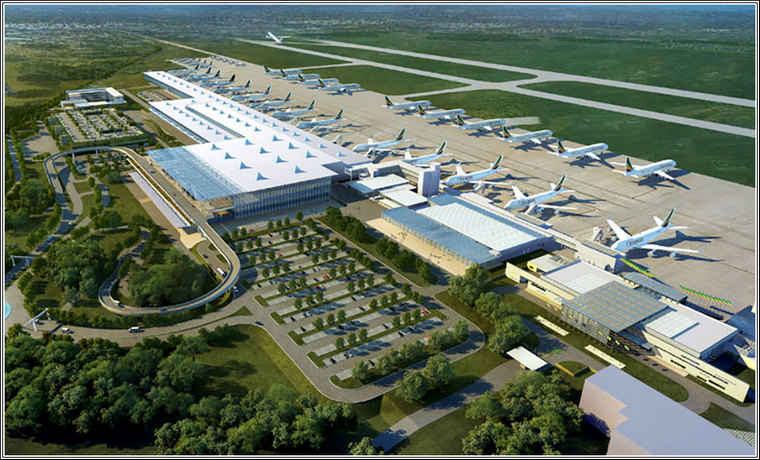
Ethiopian Airlines (ET) is delighted to announce that it has signed an interline agreement with Airlink(4Z), an airline based in Johannesburg, South Africa. Ethiopian has entered into an interline agreement with Airlink to allow passengers to enjoy seamless travel with a single ticket and lower fare tickets between points within the carriers' synergized networks. With the interline agreements between the two carriers, passengers can book through their itineraries on both airlines easily. The partnership attracts more customers providing ease of connectivity to their destinations served by both Ethiopian and Airlink.
Mr. Tewolde Gebremariam, Group CEO, Ethiopian Airlines remarked, "In our continuous commitment and endeavour to expand our service beyond our extensive network in Africa, we are happy to enhance our cooperation and add Airlink to our list of growing partners in Africa." he added, "As South Africa represents the continent's largest market and with the significant changes in the region's industry players, implementation of this interline agreement will create ease of access to those travelling to/from South African regional airports and Ethiopian destinations across five continents."
Ethiopian Airlines has been implementing various partnership agreements with African and global carriers to further expand its accessibility to its customers. The partnership with Artlink in particular will increase seamless connectivity options for customers in the regions of South Africa with the vast network of Ethiopian Airlines in the continent and beyond. Ethiopian Airlines connectivity options are crucial in fulfilling the increasing demand of our customers. Ethiopian and Airlink customers will handle each other's travellers check in and baggage for all their flights with the airlines. Airlink provides services between smaller, under-served towns and larger hub airports. Hence, through the interline agreement signed with Ethiopian, customers from south Africa will benefit from more than 60 African destination of Ethiopian.
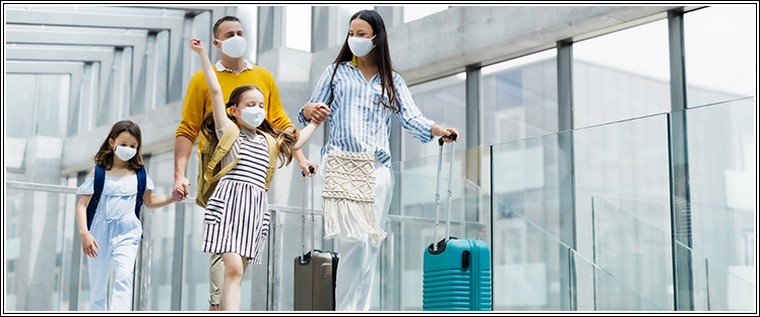
Ministers, Deputy Ministers and the heads of 24 international organizations completed a comprehensive review of pandemic-driven priorities for global air transport recently, formalizing new commitments on border risk management and vaccination approaches, building air transport back better for sustainability and future pandemic resilience and other key priorities aimed at accelerating air tourism and trade recovery and reconnecting the world.
The agreements were enshrined in a new Declaration they adopted as the key outcome of ICAO's High-level Conference on COVID-19, which was completed after nine days of intensive virtual multilateralism.
The new ministerial Declaration, adopted in the presence of over 50 Ministers and Deputy Ministers, recognizes the severity of the COVID-19 crisis for civil aviation and its cascading impacts on global supply chains and the many national economies which rely so significantly on international flights for tourism and trade.
It also recognized the critical role now being played by air transport and the ICAO Council's Aviation Recovery Task Force (CART) in keeping the essential supplies and personnel moving to where the world needs them most.
Google Block Ad
The participating countries committed to a multilayer risk management strategy for international civil aviation, one which is adaptable, proportionate, non-discriminatory and guided by scientific evidence.
To strengthen global public confidence in air travel, the countries emphasized that while vaccination should not be a precondition for travel, it is highly desirable that it be used to facilitate increased international mobility. Countries agreed to work with ICAO and other stakeholders to ensure the interoperability and accessibility of secure applications to validate pandemic-related testing, vaccination and recovery certification.
They also committed to promoting, to the greatest extent possible, a harmonized and inclusive approach, including alleviating or exempting testing and/or quarantine requirements for fully vaccinated or recovered passengers, taking into account the different circumstances of individual states and their national polices. This is consistent with current World Health Organization (WHO) recommendations.
Additional commitments focused strongly on ensuring the long-term sustainability of the air transport sector, both in terms of its future resilience to new infectious disease outbreaks and the need to address the climate change challenge.
Further agreement was forged around the financial support needed to sustain air operators and regulators through the coming critical months for sectoral recovery and to address key safety and passenger facilitation priorities as the global air network returns to full operational readiness.
As he guided states' discussions toward the conclusion of their agreements, ICAO Council President Salvatore Sciacchitano noted that the Declaration reflecting them "demonstrates our solidarity and determination and conveys a strong political message to international communities and world economies."
"The level of commitment and engagement demonstrated has been remarkable and I wish to extend my heartfelt appreciation for the valuable contributions that have led to the successful outcome of this conference."
In his closing remarks to the event, ICAO Secretary General Juan Carlos Salazar stressed that this is a very critical moment for governments to be reviewing and refining their pandemic restrictions on international air travellers.
"These outcomes are of urgent concern today to the many millions of people around the world whose livelihoods so fundamentally depend on the capabilities and reach of global aviation. They are also of key importance to the wider global economic and supply chain recovery and to the most basic socio-economic needs of all ICAO Member States," he emphasized.

The International Air Transport Association (IATA) urged governments to use the commitments reached at the ICAO High Level Conference on COVID-19 (HLCC) to make real progress towards restoring global air connectivity.
States attending the ICAO HLCC declared their commitment to 14 measures which, if acted upon, would enable airlines to meet the demands of consumers worldwide for a revival of air travel. In particular, two commitments need the most urgent action by governments. These are:
'We commit to taking effective measures to prevent the spread of SARS-CoV-2, the virus that causes COVID-19 and other communicable diseases by international air travel, in particular through the implementation of the ICAO CART guidelines and encourage the harmonization of Member States' multilayer risk management strategies to safely restore international connectivity and support the revival of the global economy as a critical step towards achieving our goal to enhance the social, environmental and economic sustainability of aviation, ensuring the interoperability and mutual recognition of and accessibility to, digital applications, secure transmission and validation of pandemic-related testing, vaccination and recovery certification that protects privacy and personal data.'
'We commit to promoting, to the greatest extent possible, a harmonized and inclusive approach to facilitate safe international air travel, including alleviating or exempting testing and/or quarantine requirements for fully vaccinated or recovered passengers, taking into account the different circumstances of individual States and their national policies, in keeping with WHO's policy and technical considerations for implementing a risk-based approach to international travel in the context of COVID-19 and providing exceptions for non-vaccinated passengers. This will enable us to work towards strengthening the confidence of the travelling public and safely rebuilding international civil aviation.'
"Government-imposed restrictions continue to stop a revival of international travel. It remains 70% down on pre-crisis levels. The ICAO HLCC commitments show that governments understand what is needed to re-start global connectivity. The task now is implementation. Some governments have already started. The imminent opening of the US market to vaccinated travellers will be a big step forward. But we cannot let the output of this meeting remain as words on paper. The airline industry, 88 million livelihoods, 3.5% of global GDP and billions of travellers are counting on governments to deliver on the risk-managed reopening of international travel to which they have committed," said Willie Walsh, IATA's Director General.
Key new or updated recommendations to ICAO member states encompass: Implementation and recognition of testing, recovery and vaccinations certificates (including digital formats). A harmonized multi-layer risk management approach among states to facilitate international travel. Entry of fully vaccinated and recovered passengers including consideration of alleviating or exempting such individuals from testing and/or quarantine measures. Access for air crew to vaccination as quickly as possible as recommended by the WHO Strategic Advisory Group of Experts on Immunization (SAGE).
"CART 3 is a roadmap toward a risk-based, data-driven approach to managing COVID-19. Its recommendations are the building blocks for states to achieve the ambition of the HLCC declaration. After a year-and-a-half of experience with COVID-19 we have the knowledge, data and experience to safely facilitate international travel without border restrictions. All the evidence and recommendations point towards restoring the freedom to travel for those vaccinated. It is also clear that we have the capability to manage those without access to vaccination using testing," said Walsh.
The industry is advanced in its preparation to efficiently manage travel health credentials with the IATA Travel Pass. It is a solution that responds to the HLCC's recognition that a system will be needed to digitally manage pandemic-related testing, vaccination and recovery certification that protects privacy and personal data.
"Airlines cannot afford a restart that is compromised by paper-based processes for checking travel health credentials. Testing is complete and several airlines are already starting implementation of IATA Travel Pass across their networks. It's also a ready-made solution for governments to be prepared to efficiently manage their documentation processes as demand ramps-up," said Walsh.
BOEING FORECASTS AFRICA'S 20-YEAR COMMERCIAL AVIATION MARKET OPPORTUNITY VALUED AT NEARLY $400 BILLION

Boeing [NYSE: BA] forecasts that Africa's airlines will require 1,030 new airplanes by 2040 valued at $160 billion and aftermarket services such as manufacturing and repair worth $235 billion, enabling growth for air travel and economies across the continent. Boeing shared the projection as part of the 2021 Commercial Market Outlook (CMO), the company's long-term assessment of demand for commercial airplanes and services.
Africa's strong, long-term growth prospects for commercial aviation are closely tied to the continent's projected 3% annual economic growth over the next 20 years. Initiatives such as the African Continental Free Trade Area and Single African Air Transport Market are expected to stimulate trade, air travel and economic cooperation. Additionally, the region's middle class and working population is projected to double by the end of the forecast period, driving increased demand for air travel, according to Boeing.
"Africa has healthy opportunities to expand travel and tourism, coinciding with increasing urbanization and rising incomes," said Randy Heisey, Boeing managing director of Commercial Marketing for Middle East and Africa. "African carriers are well-positioned to support inter-regional traffic growth and capture market share by offering services that efficiently connect passengers and enable commerce within the continent."
The 2021 Africa CMO also includes these projections through 2040: Airlines in Africa will grow their fleets by 3.6% per year to accommodate passenger traffic growth of 5.4% annually, the third-highest growth rate in the world. Single-aisle jets are expected to account for more than 70% of commercial deliveries, with 740 new planes mainly supporting domestic and inter-regional demand. In addition, African carriers are estimated to need 250 new widebodies, including passenger and cargo models to support long-haul routes and air freight growth. 80% of African jet deliveries are expected to serve fleet growth with more sustainable, fuel-efficient models such as the 737, 777X and 787 Dreamliner, with 20% of deliveries replacing older airplanes.
Estimated demand for aviation personnel will rise to 63,000 new professionals, including 19,000 pilots, 20,000 technicians and 24,000 cabin crew members.
Commercial services opportunities such as supply chain, manufacturing, repair and overhaul are valued at $235 billion.
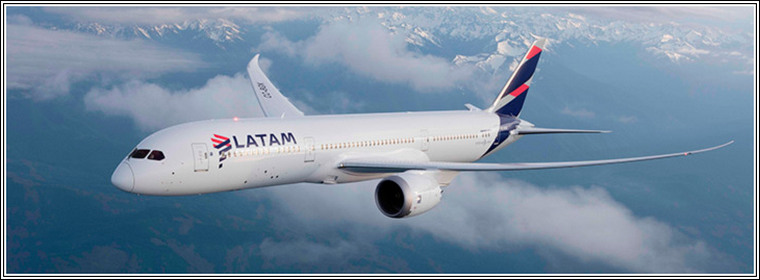
LATAM Airlines Group has been recognized as the "Leading Airline in South America" and "Leading Airline Brand in South America" at the World Travel Awards 2021. Both awards highlight excellence in operations and customer service and are chosen by industry experts as well as the public.
In addition to these honours, LATAM has been nominated as a candidate in these same categories at the global level: World's Leading Airline and World's Leading Airline Brand 2021.
"We work every day to improve the travel experience for our passengers, and these awards show us that we are on the right track. We appreciate everybody who has already been able to fly with us, as well as those who will fly with us soon," said Paulo Miranda, LATAM Airlines Group's Vice President of Customers.
The World Travel Awards seek to promote the global tourism industry, rewarding excellence asnd diversity. TWTA was first awarded in 1993 and today they are recognized as a seal of quality for the services and experiences associated with the sector.
LATAM also recently received awards from Skytrax, which highlighted LATAM's health and safety standards, as well as from the Airline Passenger Experience Association (APEX), in conjunction with the specialized site SimpliFlying, which awarded the group the "Diamond" category, one of the highest in the APEX Health Safety standard.
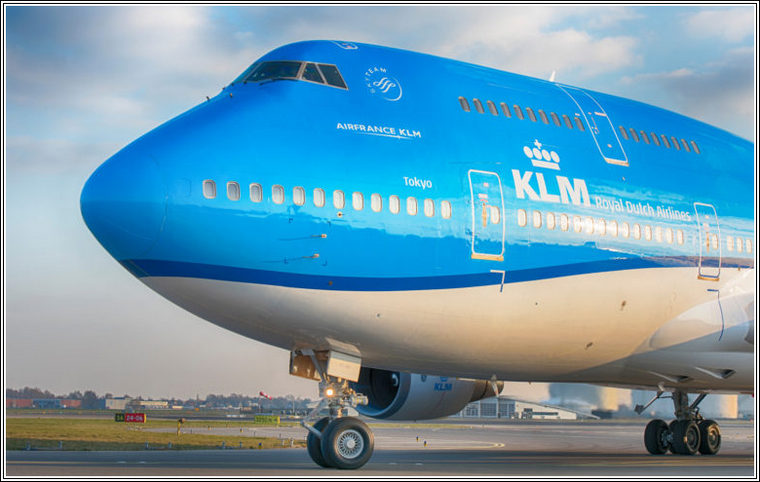
KLM's new winter schedule goes into effect on 31 October and is valid until 26 March 2022. As more and more travel restrictions are eased, KLM will be able to increase capacity again this winter and, as a result, plans to operate direct flights from Amsterdam to 162 different destinations, 72 intercontinental and 90 within Europe.
KLM has resumed operating services to almost its entire pre-Covid network (one destination excepted). Intercontinental flights will be operating at around 75% of capacity this winter compared to winter 2019.
Now that vaccinated European travellers will again be welcome in the United States starting 8 November, KLM will expand capacity to various US destinations. The number of flights to Atlanta, for example, will almost double to 12 a week and there will be 11 weekly flights to New York JFK this winter. KLM will also serve Las Vegas and Miami this winter, both three times a week. Service to Minneapolis, which resumed in the summer, will also continue this winter with three weekly flights.
KLM began noticing a sharp rise in demand for travel to the Caribbean part of the Kingdom of the Netherlands this summer. That is why the airline is also expanding capacity to the Caribbean and will double the number of flights to Curaçao to 14 a week. It will also boost daily capacity on the route to Aruba and Bonaire by deploying a Boeing 777-300ER, its largest passenger aircraft. To meet anticipated demand during the Christmas holiday season, KLM is planning three additional weekly flights to these islands, bringing the total number of weekly flights to Aruba and Bonaire to ten by the end of the year.
Google Banner Ad
The KLM network is also showing signs of recovery in South America, with four flights a week to San José and Liberia in Costa Rica (up from two last winter) and daily service to Panama City. Capacity on the route to Paramaribo will also increase considerably this winter, with four weekly flights (compared to one last winter due to strict travel restrictions). KLM's longest scheduled service, non-stop from Amsterdam to Santiago de Chile, will continue this winter with three weekly flights.
This winter will see the introduction of four entirely new destinations: Mombasa, Cancún, Port of Spain and Bridgetown. The first flight to Cancún in Mexico will take off on 2 November, with five weekly flights during the Christmas holiday season. This will bring the total number of weekly KLM flights to Mexico to 12. The first (combined) flight to Port of Spain in Trinidad & Tobago and Bridgetown in Barbados took off on 16 October and will eventually operate three times a week. Scheduled service to Mombasa in Kenya is expected to commence in early December; KLM is currently in the process of obtaining the necessary flight permits from the Kenyan authorities.
KLM's Asian network is still hampered by travel restrictions. As a result, demand for these flights lags behind those for other regions. The demand for cargo transport to and from Asia remains high, however, allowing KLM to continue serving many of its destinations this winter season.
In Europe, KLM is meeting the sharp rise in demand for both holiday and business travel. New destinations such as Zagreb and Poznan proved popular soon after their introduction this summer and KLM plans to continue operating these services this winter. With their addition, the number of European destinations served by KLM will in fact exceed that of winter 2019.
In many cases, the number of flights to European destinations is still slightly down on pre-Covid-19 figures. KLM is operating at about 84% of its European network capacity. Even so, the airline is once again serving Europe's major cities, including Berlin, London, Munich and Paris, at least five times a day. This makes KLM's winter schedule, with more flights than in the summer, attractive for the growing number of European business travellers. By increasing the number of flights in Europe, KLM will once again be able to connect many European locations through Amsterdam Schiphol, boosting the airport's status as a global hub.
"After more than 18 months, more and more borders are reopening and we are well on the road to recovery. KLM is delighted that we can once again offer passengers so many destinations. We look forward to doing what we do best: bringing people together. Travel is all about personal connections and that's what KLM stands for!" Pieter Elbers, KLM President and CEO.
KLM appreciates how difficult it can be to plan a trip during the Covid-19 pandemic. Travel rules and restrictions are changing constantly and vary from country to country, making it more important than ever for travellers to have the most up-to-date information when planning a journey. That is why KLM is offering an interactive "Where can I fly to?" map showing current travel requirements for every country in KLM's network. The map displays travel requirements based on travellers' country of departure and vaccination status, so they can choose their next destination at a glance.
In addition to this service, KLM advises Dutch travellers to consult www.wijsopreis.nl for up-to-date travel advisories issued by the Dutch government.

Cathay Pacific today released its traffic figures for September 2021 that continued to reflect the airline's substantial capacity reductions in response to significantly reduced demand as well as travel restrictions and quarantine requirements in place in Hong Kong and other markets amid the ongoing global COVID-19 pandemic.
Cathay Pacific carried a total of 131,774 passengers last month, an increase of 180% compared to September 2020, but a 94.6% decrease compared to the pre-pandemic level in September 2019. The month's revenue passenger kilometres (RPKs) rose 158.7% year-on-year, but were down 92.1% versus September 2019. Passenger load factor increased by 20.9 percentage points to 45.8%, while capacity, measured in available seat kilometres (ASKs), increased by 40.4%, but remained 87.4% down on September 2019 levels. In the first nine months of 2021, the number of passengers carried dropped by 89.4% against a 71.7% decrease in capacity and an 85.9% decrease in RPKs, as compared to the same period for 2020.
The airline carried 130,997 tonnes of cargo and mail last month, an increase of 19.7% compared to September 2020, but a 24.1% decrease compared with the same period in 2019. The month's revenue freight tonne kilometres (RFTKs) rose 22.3% year-on-year, but were down 14.3% compared to September 2019. The cargo and mail load factor increased by 3.8 percentage points to 79.7%, while capacity, measured in available freight tonne kilometres (AFTKs), was up by 16.4% year-on-year, but was down 29.6% versus September 2019. In the first nine months of 2021, the tonnage decreased by 5.5% against a 17.8% drop in capacity and a 7.3% decrease in RFTKs, as compared to the same period for 2020.
Chief Customer and Commercial Officer Ronald Lam said: "Following on from August, our passenger business continued to see some improvement in September. Average daily passenger numbers were at similar levels to the previous month, while on 17 September we carried a total of 6,562 passengers, the highest total for a single day since late March 2020. Nevertheless, we still operated only approximately 13% of our pre-pandemic passenger capacity when compared to September 2019.
"Student traffic from the Chinese Mainland continued to contribute strongly to the performance of our passenger business. As was anticipated, demand for student travel to the US was strong at the beginning of the month, but tapered down before being overtaken by growing student traffic from Hong Kong and the Chinese Mainland to the UK. Besides, passengers travelling within Asia via Hong Kong was also a key driver for demand. In contrast, passenger demand for flights into Hong Kong remained very weak due to the strict quarantine requirements.
"Cargo demand continued to grow as we stepped into the traditional cargo peak season. To meet this demand, we operated our freighter fleet at peak capacity throughout September, further supplemented with additional cargo-only passenger flight operations, which surged 20% compared to August. Overall, we managed to operate approximately 70% of our pre-pandemic cargo capacity when compared to September 2019.
"Overall tonnage grew month-on-month by more than 5% to 130,997 tonnes - the most cargo we've carried in a single month since the start of the COVID-19 pandemic. Strong performances were recorded across our network, with our home market Hong Kong and a number of Southeast Asian countries achieving record revenues in September. Our time-sensitive Priority LIFT product, as well as our charter and "preighter" solutions, have also seen keen interest from customers.
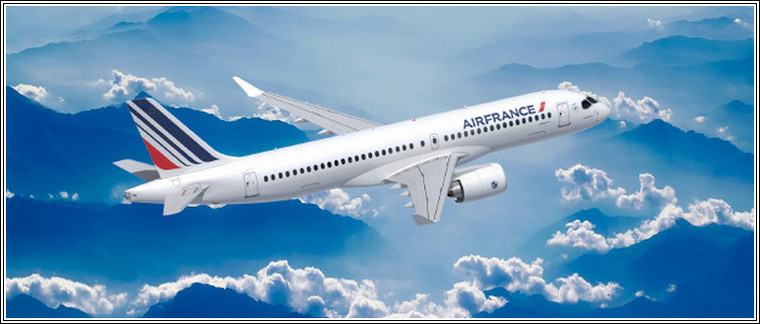
With the lifting of travel restrictions, entry into service of Air France's Airbus A220 to Berlin, Madrid, Barcelona, Milan and Venice starting on 31 October 202 and the resumption of traffic to numerous destinations, Air France is increasing capacity for the winter season (October 2021 - March 2022). In this way, up to 182 destinations will be served (87 on long haul and 95 on short and medium-haul), with new routes launched on all continents.
This winter, Air France will add four destinations to its network on departure from Paris-Charles de Gaulle:
Zanzibar (Tanzania): 2 weekly flights as a continuation of flights to Nairobi as from 18 October 2021
Muscat (Oman): 3 weekly flights as from 31 October 2021
Colombo (Sri Lanka): 3 weekly flights as from 1st November 2021
Banjul (Gambia): 4 weekly flights as from 1st November 2021
Air France will also resume its flights to stations that have been closed since the beginning of the Covid crisis - Fortaleza (Brazil, 3 weekly flights as from 22 October 2021), Mahé (Seychelles, 2 weekly flights as from 23 October 2021), Cape Town (South Africa, 3 weekly flights as from 31 October 2021), Hong Kong (China, 1 weekly flight as from 5 November 2021), and Seattle (USA) 3 weekly flights as from 6 December 2021). Flights to Port-Louis (Mauritius) already resumed on 5 October 2021, with 7 weekly flights.
Following the announcement to lift travel restrictions for vaccinated travellers expected in November 2021, Air France will progressively increase its capacity to and from the USA, where it serves 11 destinations (New York JFK, Boston, Washington DC, Detroit, Atlanta, Chicago, Miami, Houston, Seattle, San Francisco and Los Angeles) with up to 100 weekly flights. By March 2022, Air France expects to return to a capacity equivalent to approximately 90% of its capacity in 2019 to and from the USA (compared to 50% in summer 2019) by adding frequencies to key destinations such as New York, Miami or Los Angeles and by using larger capacity aircraft.
On its long-haul network, Air France will also connect Paris-Orly to Saint Martin with 3 weekly flights, with effect from 4 December 2021. This service will be in addition to the flights departing from Paris-Charles de Gaulle, with a total of 10 weekly flights operated to this destination. Saint Martin will thus join Cayenne, Pointe-à-Pitre, Fort-de-France and Saint-Denis de la Réunion in the list of destinations offered by Air France on departure from the two Paris airports, facilitating connections throughout the company's short, medium and long-haul network.
Google Banner Ad
PLEASE GO TO
www.youtube.com/channel/UCCuRVZAGodT6sztTeXBGeMw
and subscribe to our YouTube channel
 |
 |
 Copyright © 2024 Pilot's Post PTY Ltd
The information, views and opinions by the authors contributing to Pilot’s Post are not necessarily those of the editor or other writers at Pilot’s Post.
Copyright © 2024 Pilot's Post PTY Ltd
The information, views and opinions by the authors contributing to Pilot’s Post are not necessarily those of the editor or other writers at Pilot’s Post.